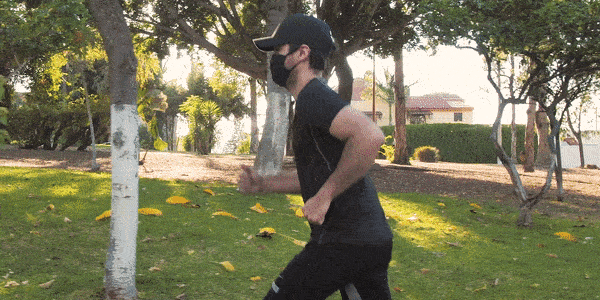We all know that exercise and sports are good for your health. But do you know exactly how much you need to exercise to actually stay healthy? And does age also play a role in how much exercise we need? World Health Organization (WHO) sets exercise guidelines for this? You can read all about it in Bas' new blog.
What are the exercise guidelines?
The exercise guidelines of the World Health Organization (WHO) are designed to give advice on how much physical activity you need to maintain good health. The old exercise guideline assumed that you should exercise for 30 minutes a day. Last November, this exercise guideline was revised by the WHO adapted. Now, at the request of the Ministry of Health, Welfare and Sport, this exercise guideline has been combined with the previous fit norm and combination norm. An update of the old exercise guideline from 2017.
By lockdown sports 44% of the Dutch less
These exercise guidelines are incredibly important, especially with many sports facilities closing. From a new measurement in the survey of 'Sports behaviour and effects corona pandemic' reveals that 44% of the Dutch have played less sport due to the current lockdown and corona measures. Thus, sports participation among children, young people (aged 5 to 18) and the elderly dropped by a whopping 65%. Of course, there is considerably less sport in December, but such a large drop was not expected.
How much exercise you need depends on your age
These new exercise guidelines are designed for different age groups. Thus, there is a big difference between the exercise guidelines for children and adults, but only a small change between adults and the elderly.
Exercise guidelines for children aged 4 to 18 years
For children, this means at least 1 hour a day of moderate-intensity exercise. Longer exercise provides additional health benefits. It is also important that they do muscle- and bone-strengthening activities such as volleyball, dancing, playing outside and cycling three times a week. It is important to avoid sitting still.
Exercise guidelines for adults aged 18 to 64
For adults, exercise is good, but moving more is better! Therefore, try to provide at least 150 minutes of moderately intensive exercise per week. Do you exercise longer/more often? Then this is only better for your health. It is also important for adults to avoid sitting still. Try to spread exercise over several days.
Exercise guidelines for the elderly
For the elderly, the same exercise guidelines apply as for adults, but supplemented by balance exercises. Think of exercises like yoga, ballet, pilates or gymnastics.
What are muscle and bone strengthening activities?
The new exercise guidelines state that children should do muscle and bone-strengthening activities at least three times a week. For adults and the elderly, twice a week applies. Performing muscle- and bone-strengthening activities reduces the risk of chronic diseases such as diabetes and cardiovascular disease in the elderly. It also reduces the risk of depressive symptoms and bone fractures. In muscle-strengthening activities, you train your strength, endurance and muscle size. In bone-strengthening activities, you strain the body with your own weight. This can include trampolining or skipping rope.
Exercise tips from light to heavy intensity
Moving can be done anywhere and anytime, in and around the house. So you can exercise both during work and in your leisure time. Different activities are in turn divided into different categories. For instance, there are light, moderate and high-intensity ways of moving. One category in which we do not move at all is sitting still. This includes activities where you use little or no energy at rest such as: reading, watching TV, gaming or studying. Do you want to move but can't think of anything? Then we have listed some activities for you here:
Light-intensity modes of exercise
When performing a mildly intense type of exercise, you will not notice accelerated breathing or increased heart rate. Some examples are:
- Washing up or vacuuming
- Home chores
- Yoga exercises
Moderate-intensity modes of exercise
Under moderate-intensity exercise, you have an increased heart rate and accelerated breathing. Some examples are:
- Walk around
- A little cycling
- Trampolining
High-intensity modes of exercise (sports).
During high-intensity ways of exercising, you get out of breath faster than moderate-intensity ways of exercising and you start sweating faster. Some examples are:
- Running
- Squash
- Cycling
Do you need advice and guidance on getting moving or are you not sure where to start? Then contact FriskFysio
Do you want to start exercising or are you not sure what your limits are? For advice and guidance contact with us. Together we will look at the options around your physique and how best to exercise. You can also reach us by emailing info@friskfysio.nl or calling 085-5000333.





